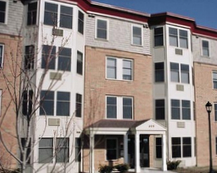| shared equity: overview |
| By sharing potential gains in home price appreciation with the supporting entity, shared equity programs result in significant benefits now and
for years to come. Homebuyers benefit from a substantially lower home
price and the opportunity for home equity gains.
Communities benefit by retaining vital workers who otherwise couldn't
afford to live in the communities they serve. And, by ensuring that the
public's investment keeps pace with the housing market, shared equity
strategies allow governments to help generations of families achieve
homeownership with a single initial investment. What problems do these policies solve? In addition to preserving affordability, shared equity homeownership helps to preserve the value of public or private homeownership subsidies in the face of rising home prices, particularly when home prices increase faster than incomes. In many cases, the initial subsidy cannot cover the affordability gap in the future. Homes that were initially made affordable through substantial investment may become unaffordable to the next purchaser, even if the subsidy is reinvested in the home upon resale. This problem is less acute when the public subsidy is small - say $2,000 or $5,000 - but becomes more serious as the subsidy increases. In some parts of the country, it is not uncommon for homeownership subsidies to exceed $25,000 per unit. In parts of California, for example, deep homeownership subsidies have exceeded $100,000. Shared equity homeownership can be used to preserve the affordability of units made available through inclusionary zoning or other programs that incentivize or mandate affordability. Many inclusionary zoning programs require the below-market homes to remain affordable for some defined period of time. Whenever the term of affordability expires, however, time-limited resale restrictions ultimately allow the homes to be sold for full market value, eliminating the homes from the affordable stock and providing a large windfall to the beneficiary. Finally, certain types of shared equity homeownership can help preserve or foster communities with a mix of incomes by ensuring that some number of homes in desirable neighborhoods always remain affordable. In light of rising energy prices, there is likely to be increased demand for housing near public transit stops and job centers, even when overall housing demand in the market is weak. Shared equity models, such as community land trusts, deed-restricted homeownership and limited-equity cooperatives can be particularly helpful in ensuring the preservation of affordable housing opportunities for low- and moderate-income families in these energy-efficient locations. Where are these policies most applicable? | Solutions in Action |
 City's Edge condominiums is a 60-unit building that includes 31 homeownership units made permanently affordable through use of a shared appreciation model. The building was developed by the Champlain Housing Trust (CHT) in Burlington, Vermont. Families that buy a home through CHT receive downpayment assistance to reduce the cost of purchasing a home. In return, the family agrees to sell the home for an affordable price to CHT or a qualifying buyer. The affordable price allows the original purchaser to recover their initial investment plus 25 percent of any home price appreciation. The remaining appreciation is used to keep the home affordable to the next buyer. An evaluation of this model found that CHT successfully preserves long-term affordability while providing home purchasers with net proceeds from resales averaging almost $12,000. Almost 70 percent of families that resold homes originally purchased through the Trust went on to purchase market-rate homes. [1] |